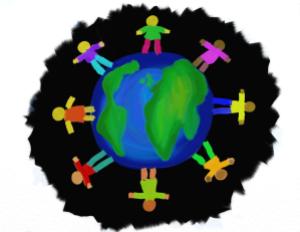 On August 20, 1965, Alabama resident Tom Coleman, a white-skinned vigilante, aimed his gun at seventeen-year-old, black-skinned Ruby Sales and threatened to blow her brains out. Jonathan Daniels, her white-skinned companion in the Southern Freedom Movement, threw himself in front of Ruby and was killed instantly.
On August 20, 1965, Alabama resident Tom Coleman, a white-skinned vigilante, aimed his gun at seventeen-year-old, black-skinned Ruby Sales and threatened to blow her brains out. Jonathan Daniels, her white-skinned companion in the Southern Freedom Movement, threw himself in front of Ruby and was killed instantly.
In a recent On Being interview, Ruby Sales reflected on the larger context of this incident: “When you signed up to be a part of the movement, it became very clear that we were willing to die. Not because we were suicidal but because we believed so much in the work that we were doing that we did not believe that death was the end.”
As a correction of how the story of Jonathan’s murder is usually framed, Ruby said, “Truly I am grateful that Jonathan saved my life and truly that was an important event. But at the same time, the narrative must include the profound impact that local black people had on shaping and stretching my life as a young black woman in the south.”* Jonathan’s heroic act was one small part of a larger justice movement that had been active for generations both in Ruby’s community and around the world.
I thought of Ruby’s words recently when a raging White Supremacist yelled anti-Muslim vitriol at two teenagers, one wearing a hajib, and then killed two white men and injured another who stepped between hatred and those threatened. Ruby’s words remind me that the horrifying event that occurred in my Portland, OR neighborhood on Friday, May 26, 2017, was one part of a nation-wide pattern where other Muslim, Black and Brown people (among others) experience violence.
Racial slurs and violence toward Muslims and non-whites aren’t new. Killing unarmed black men and women isn’t new. Injustice from the “Justice” system isn’t new. Prejudice and threat of deportation to immigrants aren’t new. They are, however, becoming more visible … to whites like me.
The incident in my neighborhood a few weeks ago isn’t an isolated event. It is part of a much larger story of hatred and violence that still festers at the heart of our nation. It is also one part of a long, powerful movement for compassion, justice and equity that many have bravely walked for hundreds of years.
The larger context is important. Oregon was founded as a white supremacist state: black-skinned people were barred from living within our borders. The KKK long supported our governmental leaders. Today, green and progressive Portland is one of the whitest big cities in the nation.
I am grateful for the heroic deeds of Ricky, Taliesin and Micah, and for the heroic deeds of millions over the centuries who have stepped forward to follow the leading of their hearts and courageously stand for compassion and justice. I am saddened by the impact of hatred hurled at two teenage girls, and for millions over the centuries who have long been the brunt of prejudice, inequity and hatred. The power to transform our world’s injustice and stark divisions lies in our ability to see these individual incidents as one part of a much larger movement.
This is a journey of transformation that we must take together. This is not a time to deepen our divides, even if the divides are between oppressed and oppressor. This journey requires us to all step courageously into the gaps that divide us. Standing together in the midst of both hatred and the compassion, each of us can begin—or continue—to look inside our own skins and root out assumptions, stereotypes and fragments of the “isms,” then take the risk to actively build the world that best serves all of our children, now and for generations to come.
Otherwise, actively or passively, we are complicit in supporting the underlying generational behavior that erupts into violent and hateful deeds.
*These critical words of context for Jonathan’s death were cut from the finished Krista Tippet’s On Being interview of Ruby Sales. For that reason, I recommend listening to the uncut version.
This blog is one in an upcoming series of “The Bigger Picture” blogs.